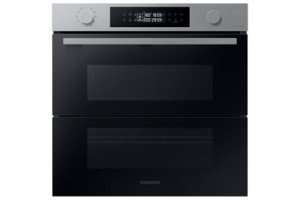10 Key Factors About Integrated Ovens You Didn't Learn In The Classroom

Comprehensive Guide to Integrated Ovens in the UK
Integrated ovens have become significantly popular in contemporary homes across the UK, thanks to their space-saving styles and streamlined aesthetic appeals. As more house owners seek to develop a smooth appearance in their cooking areas, integrated ovens deliver both performance and a contemporary touch. This article offers an in-depth exploration of integrated ovens, covering their advantages, features, types, and factors to consider to help you make an informed option.
What is an Integrated Oven?
An integrated oven is designed to be built into kitchen cabinets, providing a structured and cohesive look. Unlike freestanding ovens, which stand alone and can control the kitchen space, integrated ovens are tucked away within systems, frequently at eye level. This creative design not only makes the most of area but likewise improves the visual appeal of the kitchen.
Benefits of Integrated Ovens
- Aesthetic Appeal: Integrated ovens blend perfectly with cabinetry, creating a modern, uncluttered look.
- Space Efficiency: Ideal for smaller sized kitchen areas, integrated ovens make efficient use of space without compromising on style.
- Practical Access: Many integrated ovens are placed at eye level, making it simpler to examine on food without flexing down.
- Temperature level Control: These ovens often come geared up with innovative temperature-control functions, making sure even cooking.
- Energy Efficiency: Many contemporary integrated ovens boast energy-efficient scores, assisting to lower electric bills.
Secret Features to Consider
When choosing an integrated oven, there are several features to keep in mind:
- Size: Common widths for integrated ovens include 60 cm and 70 cm, but it's vital to measure your kitchen area accurately.
- Cooking Functions: Look for models with multiple cooking settings such as fan-assisted, grill, and conventional heat.
- Controls: Touch controls, dials, or knobs must be user-friendly. Some are even programmable, permitting for accurate cooking times.
- Self-Cleaning Options: Integrated ovens with self-cleaning technology streamline upkeep.
- Energy Rating: An A+ rating or greater can indicate lower energy usage.
Types of Integrated Ovens
- Single Ovens: These standard ovens fit completely into any kitchen and are normally the most common option.
- Double Ovens: For those who often prepare numerous meals simultaneously, double integrated ovens use extra space and versatility.
- Combination Ovens: These designs integrate both an oven and microwave functionality, making them flexible for various cooking techniques.
- Steam Ovens: Some designs feature steaming capabilities, enabling much healthier cooking choices by keeping nutrients.
Popular Brands of Integrated Ovens in the UK
The UK market uses a range of trusted brand names, each with distinct functions. Here are a few of the most popular:
| Brand | Secret Features |
|---|---|
| Neff | Slide & & Hide door, unique cooking approaches |
| Bosch | Convenient controls, robust build quality |
| AEG | Steam cooking features, energy-efficient alternatives |
| Hotpoint | Inexpensive, dependable efficiency |
| Samsung | Smart features and sleek designs |
Considerations Before Buying
Before buying, several elements need to be considered to ensure you select the very best integrated oven for your needs:
- Space Availability: Assess the area where you plan to install the oven, thinking about both width and height.
- Spending plan: Set a clear budget. Integrated ovens can range from cost effective to premium costs.
- Warranty and Customer Service: Investigate the guarantee period and consumer assistance provided by the producer.
- User Reviews: Reading evaluations from fellow users can offer insight into an oven's efficiency and reliability.
Setup of Integrated Ovens
Setting up an integrated oven can be a straightforward procedure, but it typically requires cautious planning. It's recommended to hire an expert installer to ensure that your oven is effectively fitted into cabinetry and linked to the electrical supply securely.
Setup Steps:
- Preparation: Measure the install space carefully and remove any existing appliances.
- Kitchen cabinetry: Modify cabinetry if required, guaranteeing sufficient ventilation.
- Electrical Connections: Ensure that a certified electrical expert links the oven according to regional guidelines.
- Evaluating: Once installed, check the oven to verify it functions properly.
Regularly Asked Questions (FAQs)
1. Are integrated ovens more pricey than freestanding ones?
Integrated ovens can be more expensive due to their style and setup requirements, however rates vary widely based upon functions and brand names.
2. Can I install an integrated oven myself?
While some may attempt a DIY setup, it's usually much safer and advised to work with a professional to prevent problems with electrical connections.
3. What is the lifespan of an integrated oven?
With appropriate care, many integrated ovens can last as much as 10-15 years.
4. Can I replace a freestanding oven with an integrated one?
Yes, but ensure that your kitchen cabinetry is appropriate for integrated models, and change area as needed.
5. Do integrated ovens require special upkeep?
Like all ovens, routine cleaning is essential. integrated gas oven and hob packages integrated ovens include self-cleaning options that simplify maintenance.
Integrated ovens are an outstanding option for those looking to create a contemporary, meaningful kitchen style without compromising efficiency. By comprehending the advantages, features, and considerations surrounding integrated ovens, house owners can make educated choices tailored to their cooking requirements and design preferences. Whether it's a single oven or a double, purchasing a premium integrated design can enhance not just your cooking experience but also the aesthetic appeal of your kitchen.

